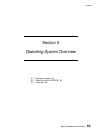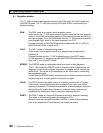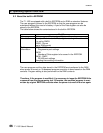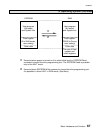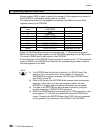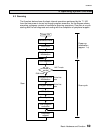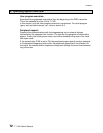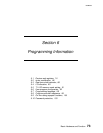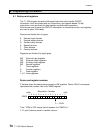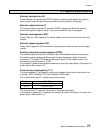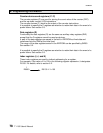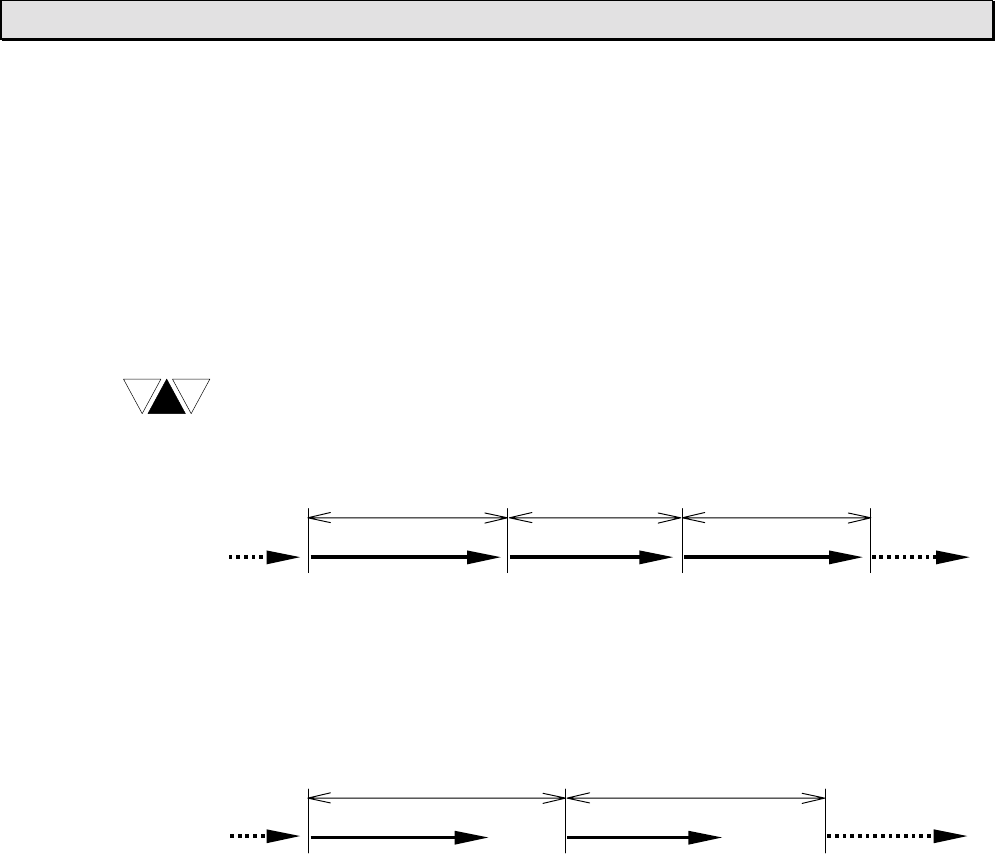
6F3B0253
Basic Hardware and Function 71
5. Operating System Overview
Self-diagnosis:
Checks the proper operation of the T1-16S itself. If an error has detected and cannot
be recovered by re-tries, the T1-16S moves into ERROR mode. For the self-diagnosis
items, refer to section 10.2.
Mode control:
Checks the mode control switch status and the mode control request commands from
the programming tool.
The scan mode − floating scan or fixed-time scan − is also controlled hear.
The floating scan:
When one scan is finished, immediately starts the next scan. The scan time
is shortest, but may vary depending on the program execution status.
Program check:
At the beginning of the RUN mode, the user program is compiled and its validity is
checked.
I/O update:
Reads the external input signals into the external input devices/registers (X/XW), and
sends the data of the external output devices/registers (Y/YW) to the external output
circuits. Then the outputs (relays, etc.) changes the states and latches until the next
I/O update timing.
The states of the forced input devices are not updated by this operation.
Timer update:
Updates the timer registers which are activated in the user program, and the timing
devices (S040 to S047).
The fixed-time scan:
The scan operation is started every user-specified time. The time setting
range is 10 to 200 ms (10 ms units). If an actual scan needs longer time
than the setting time, it works as the floating scan.
Scan timeScan time Scan time
Scan time (50 ms fixed) Scan time (50 ms fixed)
(idling) (idling)
NOTE



